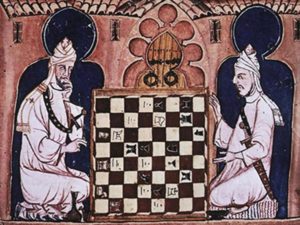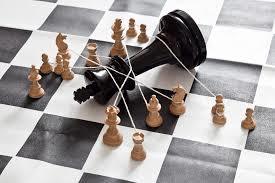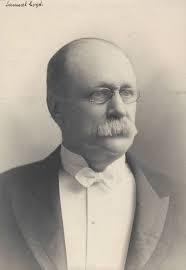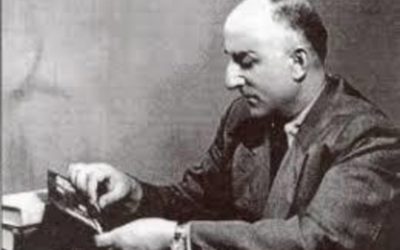Those who can’t get enough of the game — and have a passion for it that goes beyond simple one-on-one competition — also play chess puzzles. Unlike playing out a whole game with a competitor, a chess puzzle will present a particular scenario on a chess board and challenge a player to perform a particular task with it. This task is often to play as one side (usually white) and try to win the game in a certain number of moves (usually two or three). But there are also other types of chess puzzles that require a player to perform very different kinds of tasks. Remarkably, chess puzzles are about as old as chess itself. Early chess masters of the eighth and ninth centuries composed their own challenges.

Chess puzzles are great for developing competitive skills. Some experts say that studying endgame scenarios is the best way for beginners to advance their knowledge of strategy. But other, more advanced puzzles pose scenarios that are statistically improbable — that is, an average game with competent players would never produce them. People play such puzzles not so much to become better competitors, but rather to be challenged in a new way, requiring strategy that’s often counterintuitive and relies on surprising sacrifices. One such ninth-century puzzle supposedly took more than a thousand years to solve.

Traditionally, chess puzzles have been published in newspapers, and you’ll even find compilations of them in books. Today, websites offer chess puzzles for the casual beginner, intermediate or advanced player to test his or her mental muscles. You can also use our tactics trainer which is being developed.

Because of the widespread and popular demand for chess puzzle, we are covering this topic in this article today. I have also add a BONUS section divulging the tips and tricks for making a splendid puzzle. But before that, we have to go in-depth about the different types of puzzles and their format.
The most common puzzles, finding mating patterns, ask an individual to win in a certain number of moves. Two-movers require you to win in two moves, three-movers require a win in three moves, and those that require more moves are called more-movers. A well-composed puzzle of this kind will only have one possible solution in the expressed number of moves. It will also be a foolproof solution that assumes the other side will play its best defense. This is an important point to remember because this essentially means that you have to find the best play from both sides.

In each case there will be a specific and unique set of moves which achieves the target result and most commonly it will be very aesthetic, usually due to its counter-intuitive nature – usually a “quiet move” or a seemingly mad sacrifice or illogical move which then turns out to be the key to making the position work. Given below is a picture of Mikhail Nekhemevich Tal, regarded as a creative genius who played in a daring, combinatorial style. Many wild sacrifices puzzles have been composed solely by his games.

A chess problem is a particular kind of directmate puzzle that is unlikely to occur in a real game, but rather composed in order to be difficult, original or even beautiful in its theme. And while problems require players to win within a certain number of moves, studies are yet another kind of chess puzzle that asks a player to win or draw, but with no restrictions on the number of moves. The latter method is what I would recommend to beginners because solving the studies would mean you understand the basic fundamentals of the position. Finding a win in a certain amount of moves demonstrates advanced knowledge of the position and displays your mastery in truly understanding key ideas in chess. I would recommend this for advanced players only.
Going back to the topic also consider the selfmate, where white tries to force black to deliver checkmate in a certain number of moves, while black resists. The helpmate is similar, but black cooperates with white. A reflexmate is a selfmate with the additional rule that if either side can deliver checkmate, it must.

If you like the idea of chess problems for their own sake and not necessarily to improve your playing skills, you might also try heterodox puzzles (also known as fairy chess). You can start solving or creating fairy chess problems if you have a very creative outlook or imagination. Today, fairy chess more commonly refers to puzzles with stranger conditions or even unorthodox pieces (the nightrider or the grasshopper are common examples).

An interesting type of chess puzzle is retrograde analysis. This doesn’t involve moves at all — instead, the player needs to answer a question about the game in play. To answer, the individual must determine which moves were made leading up to a given situation. For instance, the challenge may be to determine whether the scenario is the result of legal moves. Or one might have to find out whose turn it is or which player made the last move.
With endless possibilities, chess puzzles themselves can easily become a lifelong study. But what if you want to make one and contribute to the chess community in this fashion. Well, here is a BONUS section for you. I will teach you the basics of making a chess puzzle. Additional techniques and tips will be posted in future articles, so stay tuned.
Here are some tips for you to build a perfect chess puzzle and help you in your chess puzzle making journey:-
- Unique solution: There should be different lines and variation and through all of that one side should have a decisive win, mating opportunities or material advantage. This almost forces the solver to calculate these lines and become more involved in the puzzle increasing engagement and makes your puzzle attractive.
- Every piece counts: When creating your puzzle, make sure that as many of the pieces are relevant. Although, there can be an exception of one or two pieces but try to make sure most of the pieces count. However, this is not always the case and an exception can be when showing a tactical puzzle based on a middlegame played by two masters.
- Making it hard: ‘Hard’ is a subjective word. Chess puzzles should be hard but not that hard. A hard puzzle attracts a flock of chess lovers. If it is too hard, it might discourage beginners and not spread the beauty of chess. That doesn’t mean that it cannot be hard. If it is easy but elegant then that works too.
- Stop using engines: This is a trap that I fell into. I just kept playing in a chess board with Stockfish 11 on with the hope that a good tactical position would fall in my lap. Stop that! Puzzles are entertaining when generated from one of the most irreplaceable aspect of humans: Creativity. You should stop using engines immediately and Additionally, shut your laptops or computer. Just bring a 8 * 8 chess board, setup the pieces and let the mind wander into a deep dark forest where 2 + 2 = 5. You can use engines for calculating different lines and variations but this should only be done once you have formed the fundamental base idea of your puzzle.
- Get Inspiration: Heck! I’m tired of repeating this. You need to leverage history and the internet to develop your creativity and imagination. Many people have developed these in a span of years but for the best puzzles to be made in the most efficient manner, you have to go through other people’s work. You know the best part of this. This is not only applicable to the field of chess but everywhere in life. I strongly recommend this method to be done over ‘spaced repetition’ which basically means doing it daily so the workload doesn’t crush you. Down below, I have given an extensive list (took me 2 hours to compile it, leverage me!) for you to go through this process in a seamless manner.
Given below is a comprehensive list of renowed famous chess composers of all puzzles type (fairy chess, retrograde analysis, tactics etc). These are mentioned down below:-
- Fadil Abdurahmanovic (1939- ) is a Grandmaster of chess composition (1992). His best work is in the form of helpmates and fairy problems.
- Edith Helen Baird (1859-1924), born Winter Wood, was the most famous female chess composer. She published her problems using the name “Mrs W. J. Baird.” She composed over 2,000 problems. In 1902 she wrote 700 Chess Problems.
- Pal Benko (1928- ) is an International Grandmaster and Endgame Composer. He was born in France, grew up in Hungary, and settled in the USA.
- Vladimir Bron (1909-1985) was a top Soviet chess composer. In 1969 he wrote Selected Studies and Problems.
- Andre Cheron (1895-1980) was the chess champion of France in 1926, 1927, and 1929. He wrote the four-volume Lehr- und Handbuch der Schachendspiele from 1952 to 1971. He is one of the most famous endgame composers.
- Eugene Cook (1830-1915) was the first American chess composer of note. In 1868 he wrote American Chess Nuts, a collection of over 2,400 positions. He was President of the New Jersey Chess Association and was the Problem Editor of the Chess Monthly. He personally composed over 800 chess problems.
- Thomas Rayner Dawson (1889-1951) was the Problem Editor for the British Chess Magazine and the Fairy Chess Review. He was considered the father of Fairy Chess. He composed over 5,000 fairy chess problems and over 6,500 problems total. He invented the Nightrider and the Grasshopper. The Nightrider moves like a knight, but then can continue to moves as a knight as long as the spaces visited by all but the last jump remain empty. The Nightrider is denoted as an inverted knight. The Grasshopper is denoted as as an inverted queen. It moves as a chess queen, but must jump exactly one piece when it moves, and it stops, directly at the square after the piece it jumped. Pieces jumped by a grasshopper are not captured.
- Vincent Lanius Eaton (1915-1962) was one of America’s greatest chess composers. He graduated from Harvard at the age of 18. He worked as a scholar at the Library of Congress. From 1939 to 1941 he was the Problem Editor of Chess Review.
- Edgar Holladay (1925- ) conducted the problem department in the American Chess Bulletin.
- Henrikh Kasparian (1910-1995) was one of the first Grandmasters of Chess Compositions. In 1980 he wrote Domination in 2545 Endgame Studies.
- Cyril Kipping (1891-1964) composed over 7,000 chess problems.
- Karl Leonid Kubbel (1891-1942) was a Russian endgame composer and problemist. He composed over 500 endgame studies.
- Sam Loyd (1841-1911) was known as the Puzzle King. He produced over 10,000 puzzles in his lifetime. He was the most famous American chess composer. He composed over 700 chess problems.
- Comins Mansfield (1896-1984) was one of the most famous of all problem composers. He composed chess problems for 72 years. In 1972 he was one of the first four to be awarded the title of Grandmaster for Chess Compositions. The other three were Genrich Kasparyan, Lew Loschinsky, and Eeltje Visserman.
- William Meredith (1835-1903) was a problem composer. A problem in which there are from 8 to 12 men on the board is called a Meredith.
- Geoffrey Mott-Smith (1902-1960) was a prolific chess problem composer
- Joseph Peckover (1897-1982) was the best known American chess composer in the early 20th century. He was born in England but emigrated to New York in 1921. He was the endgame editor for the American Chess Quarterly from 1961 to 1965. He composed over 100 endings.
- Vasily Platov (1881-1952) and Mikhail Platov (1883-1938) were brothers that teamed together to compose endgames. In 1928 they wrote Selection of Chess Studies.
- Henri Rinck (1870-1952) was a French endgame composer. He settled in Spain in 1910. In 1952 he wrote 1414 Fins de Parties. He is considered one of the founders of modern endgame composing.
- Aleksei Selesniev (1888-1967) was a strong Soviet endgame composer and chess master.
- William Shinkman (1847-1933) was one of America’s greatest chess composers. He published over 3,500 problems.
- Alexei Troitsky (1866-1942) is regarded as the greatest chess composer of endgame studies. He has over 1,000 studies to his credit.
- Milan Vukcevich (1937-2003) was an International Master and International Composition Grandmaster. He was editor of StrateGems, the publication of the Society of U.S. Chess Problemists.
- Alain Campbell White (1880-1951) was an American problem composer and chess patron. For 32 years, from 1905 to 1936, he published the Christmas series of chess problems. He did more than any other player to promote worldwide interest in chess problems.
If you are overwhelmed by this list (which I’m sure you are), a good starting point would be by reading Sam Lyod’s puzzles in his book, “Sam Loyd’s Cyclopedia of 5000 Puzzles, Tricks and Conundrums with Answers“. This is sufficient but if you are done with this. You can go through Henrikh Kasparian for his fantastic endgame puzzles and Pal Benko if you want a chess composer from recent years. He best supplements the reader with fun and thoughtful puzzles.

Good luck on your journey and thank you for contributing to the chess community by composing puzzles 🙂
Yash Mehta




0 Comments